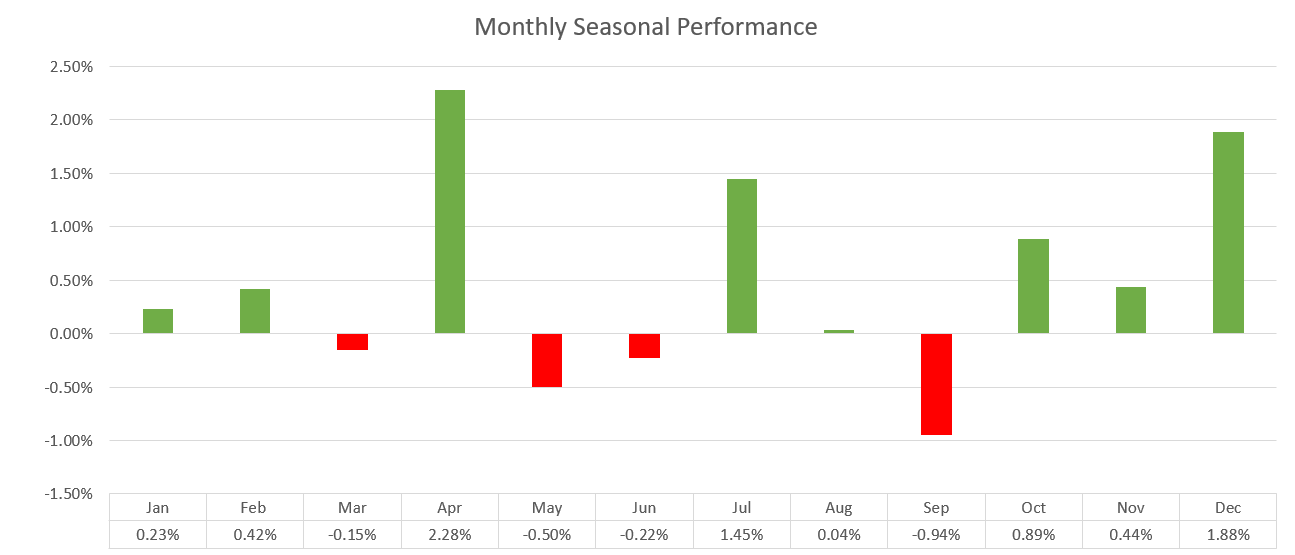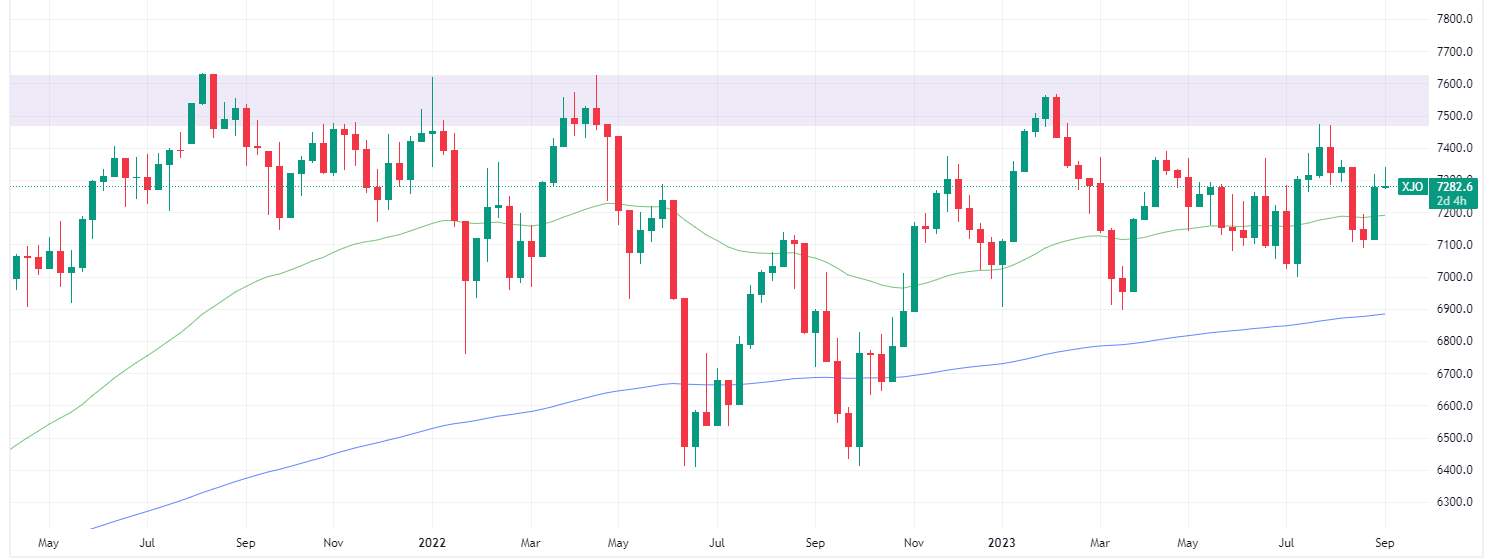How does the ASX 200 perform in September?
September – It’s the most dreaded month of the year for investors and for good reason.
Since 1992, September has emerged as the worst month of the year for the ASX 200. On average, the Index finishes the month down 0.94%, far worse than the other three negative months – May (-0.50%), June (-0.22%) and March (-0.15%).

ASX 200 monthly seasonal performance (Source: Market Index)
Its track record for closing in positive territory is also weak, up just 32% of the time.
There’s no middle ground either – If it's a positive September, the ASX 200 has averaged a gain of 3.50%. But if it's negative, the decline is 3.4%.
The problem with positive years is that most of them occurred after a major financial crisis such as the 1997 Asian Financial Crisis, 2000 Dot Com Bubble and 2008 Global Financial Crisis.
- 1990s: 1996 (+1.1%), 1997 (+6.8%) and 1998 (+3.5%)
- 2000s: 2004 (+3.1%), 2005 (+4.3%), 2007 (+5.1%), 2009 (+5.9%)
- 2010s: 2010 (+4.1%), 2012 (+1.7%), 2013 (+1.7%), 2019 (+1.3%)
Seasonality is something you should keep in the back of your mind – I’m sure we’ve had plenty of experiences that go along the lines of “I should have sold in May” or “I should have started buying before the Christmas rally.”
But at the same time, it’s just seasonality.
Should investors respect such factors this time round?
“Investors should be aware of them as opposed to fully respecting them. If you look at the last five years, September has been the weakest month on average. Conversely, everyone thinks December is the best time of the year, and has been over the past 30 years. But if you look at the last five, it’s down an average 0.44%,” said Shawn Hickman, research lead at Market Matters.
Since 1992, the ASX 200 has rallied an average 1.88% in December and this is because “a lot of companies trade ex-dividend in November, so a lot of that money finds itself back into the market,” he says.
It’s worth acknowledging that the market has come off the back of a weak August, where the ASX 200 fell 1.4% (versus a historical rise of 0.04%).
Could we see a different kind of September play out this year?
“We’re actually a little bit bullish at the moment. The markets are embracing a Goldilocks scenario, Goldman Sachs cut its US recession odds to 15% from 20% and China is pulling the stimulus levers to try and kick-start its economy,” Hickman says. “You should be aware of seasonality but you shouldn’t necessarily trade or invest because of it.”
The other positive factors at play include a relatively positive August reporting season and peak interest rates, which “I won't say we’ve got a tailwind from that but I think the headwind is gone.”
Hickman flagged the strength of the US market as a potential headwind, with the “Nasdaq close to all-time highs, the S&P 500 is strong and the Russell 2000 remains very weak. And that’s normally a good measure of liquidity.”
The bottom line
August has served as a rather hard reset for markets following a strong June and July. Across those two months, the ASX 200 was up 4.5% and the S&P 500 rallied 9.8%.
Perhaps the hard reset has allowed this September to kick off on a relatively calm note. But then again, the data shows that the bulk of September’s weakness occurs between the 10th and 22nd – Where the ASX 200 falls an average of 1.26%.
Taking a look at the bigger picture, the Index has been incredibly choppy for the past 24 months. Selling seems to kick in every time it’s rallied towards the 7,500 to 7,600 level.

ASX 200 weekly chart (Source: TradingView)
The choppy price action may serve as a reminder for investors to remain nimble during a period where it’s hard landing and sticky inflation one moment, and soft landing and peak rates the next.
Let’s see how seasonality plays out this time round and hopefully, we see a December that’s more in line with historic trends.
2 topics

